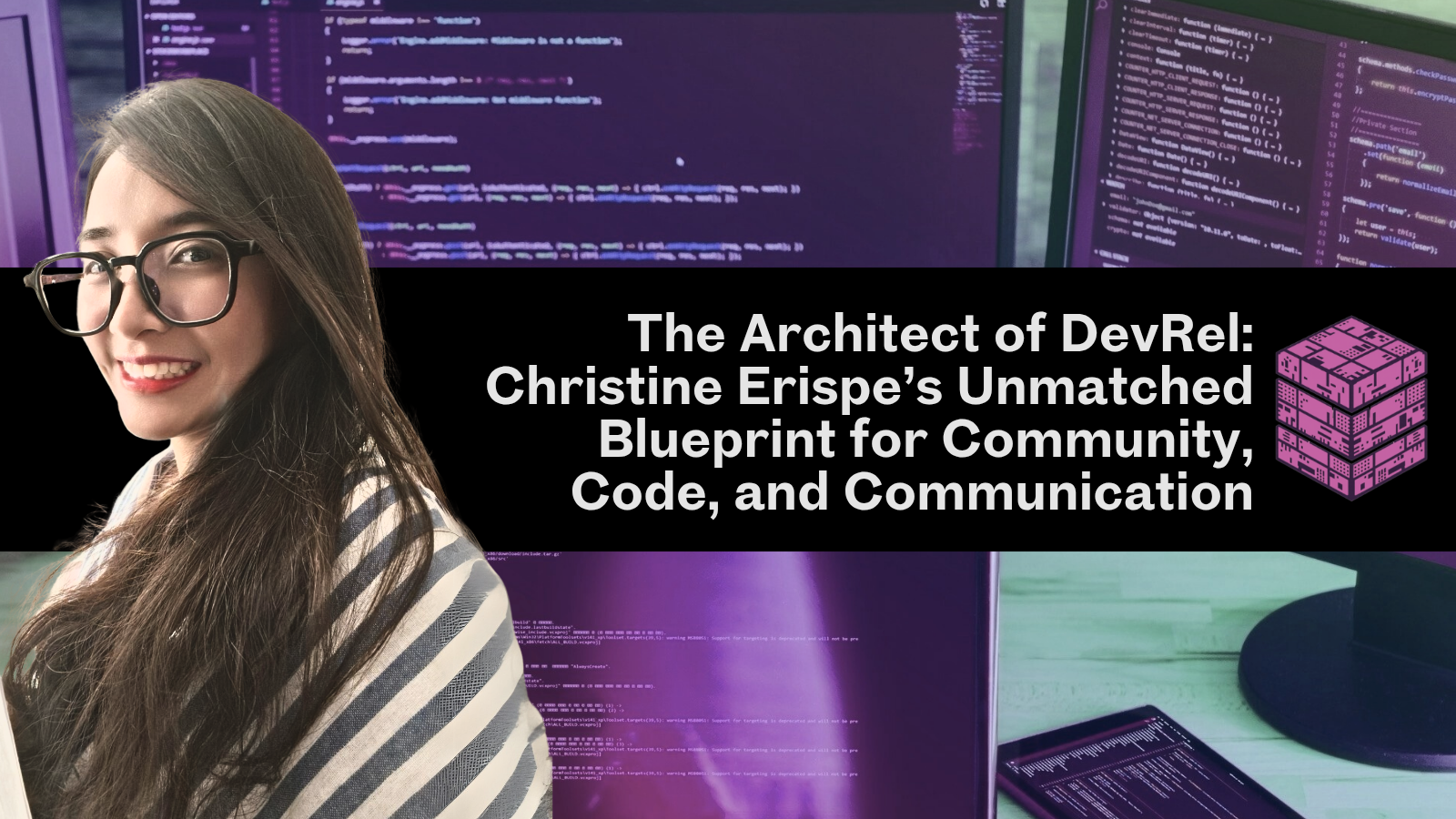From workshops that connect communities to UX principles that simplify smart contracts, one woman is quietly redrawing the map of Web3 developer relations.
Developer Relations, often shortened to DevRel, is one of those roles in the tech world that defies simple definitions. It blends education, advocacy, technical support, and community building. In Web3, it becomes even more complex. As ecosystems grow more fragmented and technologies evolve faster than onboarding can catch up, the need for a thoughtful DevRel strategy becomes mission-critical.
That’s where Christine Erispe stands out.
A founding contributor and DevRel head for ETH PH (ETH63), Christine has carved out her own definition of the role. Her work spans the technical and the human, the micro-details of wallet UX to the macro-strategy of community education. Christine treats DevRel not as a job title, but as architecture, a deliberate system for long-term engagement and education.
More Than a Job Title
Developer Relations is often misunderstood. People assume it means being a Key Opinion Leader (KOL), or a marketing figurehead for technical tools. Christine disagrees.
"They are not DevKOLs, like merely talking about the narratives that pertains to devs. They are not just marketers... They are not just mere community leaders."
Instead, she frames DevRel as a dual-bridging role. One part connects technology to the non-technical public. The other links different types of developers to each other, explaining that her framework consists of "from tech to non-tech, and tech to tech."
That means going to conventions and workshops, simplifying systems for people who may not even know how wallets work. It also means teaching Solidity to game developers or helping web devs integrate blockchain into existing codebases. For Christine, none of that is fluff. It's necessary.
The Systems Before the Syntax
When Christine teaches Web3, she doesn’t begin with code. She begins with context.
Many first-time developers, she says, mistakenly believe that learning a programming language is the main hurdle to building in Web3. But that’s not the case.
"You don't need to learn to code immediately to be able to grasp how to develop applications in the decentralized ecosystem."
Understanding systems, like wallet mechanics, how blockchains function, and how EVM operates, takes precedence. In her workshops, it can take an entire day to explain just the environment before students even touch code. That’s not inefficiency. That’s intentional design.
Christine even touched on the topic of "vibe coding." In a world where AI tools can write functional code from natural language prompts, syntax has become secondary. What matters more is understanding how the moving parts work together and knowing the constraints within which you're building.
Educational Architecture and a UX-First Approach
Christine’s teaching style is functional. She starts with a project goal and strips away everything that doesn’t contribute to achieving it.
Want to build a simple dApp? She pares down content to what’s essential.
This design-centric approach to education echoes her broader belief in planning with impact in mind. Even in her personal schedule, she doesn't plan days. She plans months, setting priorities based on impact potential and reverse-engineering the path to get there.
Christine’s sensitivity to design, flow, and systems is also no accident. Her Web2 roots in marketing taught her the value of clarity, trust, and patterns. In Web3, she finds those often missing.
"Show them the UI. Even if it's not functional until they connect their wallet, it's important that they know what it looks like."
Too many dApps, she says, hide everything behind wallet connections. Others don’t show dollar or peso equivalents, leaving users unsure about value. She wants Web3 to feel as intuitive as signing up for a Web2 platform.
Through her Waifu Project, she’s building front-end templates that reflect these values. Instead of forcing users to guess, she wants consistency. When users hover over wallet addresses, they should see chain data and balances. If an app charges gas fees, it should say so clearly. That’s not UI polish. That’s usability infrastructure.
Learning Through Storytelling
Even in her writing, Christine leans on analogies. Her 0xDanki blog about Pendle's yield stripping mechanism uses a childhood toy, the lato-lato, to explain a complex financial process. For her, storytelling isn’t a gimmick. It’s a bridge.
She builds those bridges with intentional simplicity. If it doesn’t click for the reader, it won’t stick. And if it doesn’t stick, it won’t help adoption.
When asked what she’d be doing if not DevRel, Christine doesn’t hesitate. She’s already working on cryptography research to improve cybersecurity in data-sensitive environments. She’s also building standards for UX in the Ethereum Virtual Machine (EVM) ecosystem.
None of this feels out of scope for her. To Christine, the future of blockchain isn't just in scalability or zero-knowledge proofs. It's in whether people can actually use it without feeling confused, exhausted, or excluded.
She says it best:
"We don't need more coders. We need more people who actually understand systems, know their constraints, and work with them."
In Christine Erispe’s world, DevRel isn’t a department. It’s a discipline. One that requires empathy, clarity, and structure and one that Web3 can’t thrive without.











